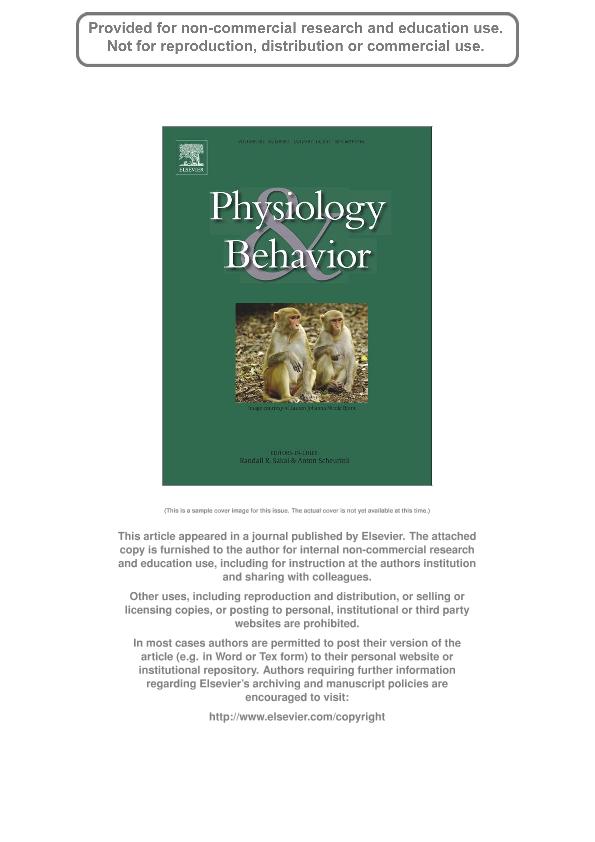Artículo
Availability of a rich source of sodium during the perinatal period programs the fluid balance restoration pattern in adult offspring
Macchione, Ana Fabiola ; Caeiro, Ximena Elizabeth
; Caeiro, Ximena Elizabeth ; Godino, Maria Andrea del Milagro
; Godino, Maria Andrea del Milagro ; Amigone, Jorge Luis; Antunes Rodrigues, Jose; Vivas, Laura Marta
; Amigone, Jorge Luis; Antunes Rodrigues, Jose; Vivas, Laura Marta
 ; Caeiro, Ximena Elizabeth
; Caeiro, Ximena Elizabeth ; Godino, Maria Andrea del Milagro
; Godino, Maria Andrea del Milagro ; Amigone, Jorge Luis; Antunes Rodrigues, Jose; Vivas, Laura Marta
; Amigone, Jorge Luis; Antunes Rodrigues, Jose; Vivas, Laura Marta
Fecha de publicación:
02/2012
Editorial:
Pergamon-Elsevier Science Ltd
Revista:
Physiology And Behavior
ISSN:
0031-9384
Idioma:
Inglés
Tipo de recurso:
Artículo publicado
Clasificación temática:
Resumen
Osmoregulatory mechanisms can be vulnerable to electrolyte and/or endocrine environmental changes during the perinatal period, differentially programming the developing offspring and affecting them even in adulthood. The aim of this study was to evaluate whether availability of hypertonic sodium solution during the perinatal period may induce a differential programming in adult offspring osmoregulatory mechanisms. With this aim, we studied water and sodium intake after Furosemide-sodium depletion in adult offspring exposed to hypertonic sodium solution from 1. week before mating until postnatal day 28 of the offspring, used as a perinatal manipulation model [PM-Na group]. In these animals, we also identified the cell population groups in brain nuclei activated by Furosemide-sodium depletion treatment, analyzing the spatial patterns of Fos and Fos-vasopressin immunoreactivity.In sodium depleted rats, sodium and water intake were significantly lower in the PM-Na group vs. animals without access to hypertonic sodium solution [PM-Ctrol group]. Interestingly, when comparing the volumes consumed of both solutions in each PM group, our data show the expected significant differences between both solutions ingested in the PM-Ctrol group, which makes an isotonic cocktail; however, in the PM-Na group there were no significant differences in the volumes of both solutions consumed after Furosemide-sodium depletion, and therefore the sodium concentration of total fluid ingested by this group was significantly higher than that in the PM-Ctrol group.With regard to brain Fos immunoreactivity, we observed that Furosemide-sodium depletion in the PM-Na group induced a higher number of activated cells in the subfornical organ, ventral subdivision of the paraventricular nucleus and vasopressinergic neurons of the supraoptic nucleus than in the PM-Ctrol animals. Moreover, along the brainstem, we found a decreased number of sodium depletion-activated cells within the nucleus of the solitary tract of the PM-Na group.Our data indicate that early sodium availability induces a long-term effect on fluid drinking and on the cell activity of brain nuclei involved in the control of hydromineral balance. These results also suggest that availability of a rich source of sodium during the perinatal period may provoke a larger anticipatory response in the offspring, activating the vasopressinergic system and reducing thirst after water and sodium depletion, as a result of central osmosensitive mechanism alterations. © 2011 Elsevier Inc.
Archivos asociados
Licencia
Identificadores
Colecciones
Articulos(INIMEC - CONICET)
Articulos de INSTITUTO DE INV. MEDICAS MERCEDES Y MARTIN FERREYRA
Articulos de INSTITUTO DE INV. MEDICAS MERCEDES Y MARTIN FERREYRA
Citación
Macchione, Ana Fabiola; Caeiro, Ximena Elizabeth; Godino, Maria Andrea del Milagro; Amigone, Jorge Luis; Antunes Rodrigues, Jose; et al.; Availability of a rich source of sodium during the perinatal period programs the fluid balance restoration pattern in adult offspring; Pergamon-Elsevier Science Ltd; Physiology And Behavior; 105; 4; 2-2012; 1035-1044
Compartir
Altmétricas



